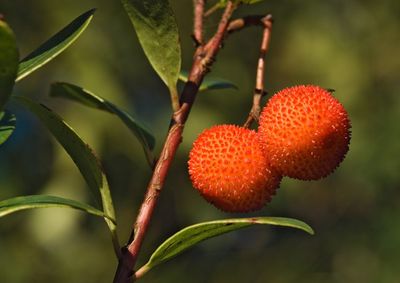What is a Strawberry Tree?
The strawberry tree (Arbutus unedo) is a charming shrub or small tree that is extremely decorative in your garden. It’s a relative of the madrone tree, and even shares the same common name in some regions. You can grow this plant as a multi-trunked shrub in a hedge or prune it down to one trunk and grow it as a specimen tree.
Growing Strawberry Trees
If you start growing strawberry trees, you’ll find that they have many delightful features. The shedding bark on trunks and branches is attractive. It’s a deep, reddish brown and becomes gnarled as the trees age. The leaves are oval with a serrate edge. They are a shiny dark green, while the petiole stems attaching them to the branches are bright red. The tree produces abundant bunches of tiny white blossoms. They hang like bells at the branch tips and, when pollinated by bees, they produce strawberry-like fruit the following year. Both flowers and fruits are attractive and ornamental. Unfortunately, strawberry tree information suggests that the fruit, while edible, is quite bland and tastes more like pear than berry. So don’t start growing strawberry trees expecting real strawberries. On the other hand, taste the fruit to see if you like it. Wait until it is ripe and falls from the tree. Alternatively, pick it off the tree when it gets a little squishy.
How to Grow a Strawberry Tree
You’ll do best growing strawberry trees in USDA zones 8b through 11. Plant the trees in full sun or partial sun but be sure you find a site with well-draining soil. Either sand or loam works well. It grows in either acidic or alkaline soil. Strawberry tree care involves regular irrigation, especially the first few years after planting. The tree is reasonably drought tolerant after establishment, and you don’t have to worry about its root breaking up sewers or cement.
